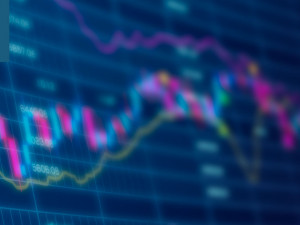
Economy under significant threat
Morning mid-market rates – The majors
29th June: Highlights
- Brexit and Covid ganging up on Sterling
- No respite between original and second wave of infections hits dollar
- Confidence indices to drive single currency
Sunak may have to lengthen furlough either way
The deadline for the UK to request an extension to the December 31st deadline for it to leave the EU expires tomorrow and it is virtually certain that nothing more will happen in that direction.
This means the both sides have six-months in which to come to some agreement or the UK will revert to trading with the EU under WTO rules and regulations.
While this may not be a disaster, it is perhaps more beholden upon the UK to decide its future sooner rather than later, since it will be predominantly UK companies, SMS’s in particular, that will suffer from growing uncertainty and departure from what they are used to.
As talks progress, there will be plenty of rumours and counter rumours about progress being made and who is to blame if it isn’t.
The lifting of the lockdown in several areas of the economy will definitely see funds flow back into the country’s coffers and Chancellor Rishi Sunak no doubt has his calculator out figuring the cost of reducing the VAT rate from 20% to 10% on a wide range of goods across the spectrum. He may also be considering reducing the tax on new cars and could combine that with an environmental pledge over electric vehicles.
Last week, Sterling traded between 1.2543 and 1.2314, closing within a few pips of its opening level at 1.2336.
Considering your next transfer? Log in to compare live quotes today.
Growth, NFP and Powell speech to provide direction
Fed Chairman Jerome Powell will testify before the House Financial Services Committee tomorrow. He will provide an update on the actions being taken under the CARES (Coronavirus Aid Relief and Economic Security) act.
In his recent bi-annual testimony before the Congress he was forthright in his commitment to providing any and all assistance necessary to help both the economy and the population recover from the effects of the pandemic.
The CARES Act which was passed overwhelmingly with bipartisan support at the start of the lockdown, requires regular review to ensure that it is still fit for purpose. This fits with the U.S. Social services provisions which enshrine the necessity for every individual to work to provide their own succour.
Powell’s testimony will provide a backdrop to the decision that must be taken by mid-July over the Federal support being given to individuals that have lost their jobs as part of the effect of lockdown.
This week also sees the release of the June employment report. Expectations are for a further 3 million jobs to have been added but it is the subsequent reports for July and August that will provide the real acid test. With support for businesses to keep furloughed staff on the payroll expiring there could be a significant spike in job losses should the support be watered down or even removed entirely.
Data releases this week include pending home sales, consumer confidence, manufacturing output, and factory orders.
President Trump will continue his re-election campaign, trying to deflect criticism of his Administration’s handling of the pandemic and battling to overturn a 13% lead held by his rival, Joe Biden, the Democrat candidate.
Last week the dollar index tried to recover lost ground but was unable to break free of its wider 97.80/96.20 range.
Activity improving, but what about retail and hospitality?
This week data will be released that reports on ongoing confidence for industry and services as well as how the consumer perceives current and future conditions.
So far, it is fair to say that the pace of the easing of restrictions has been well handled but as summer vacation time starts and restrictions are eased further a second wave becomes more of a possibility. Social distancing rules have become the responsibility of individual nations which has led to confusion from State to State.
Confidence levels are expected to remain depressed even as they recover from the data for April and May when the lockdown was really biting.
The deluge of liquidity that has been added as the ECB uses every cent at its disposal and then prints more, while the economy remains in partial lockdown amounts to……. very little.
Until businesses start to operate at something approaching capacity just how the effect of the lockdown will continue to drive consumers is vital intelligence.
Job losses and job security are the vital cogs in the wheel of recovery and until there can be a concerted plan in place, whether that plan includes financial aid or not, the entire economy of the region will struggle overall, even if there are one or two brighter spots.
Last week, the euro drifted as the market considered how the Union will agree on measures to aid countries in need of support. It traded between 1.1348 and 1.1168. A lot depends on the performance of the dollar this week, but strong support is at 1.1120 while the top looks solid around 1.1420.

About Alan Hill
Alan has been involved in the FX market for more than 25 years and brings a wealth of experience to his content. His knowledge has been gained while trading through some of the most volatile periods of recent history. His commentary relies on an understanding of past events and how they will affect future market performance.”



